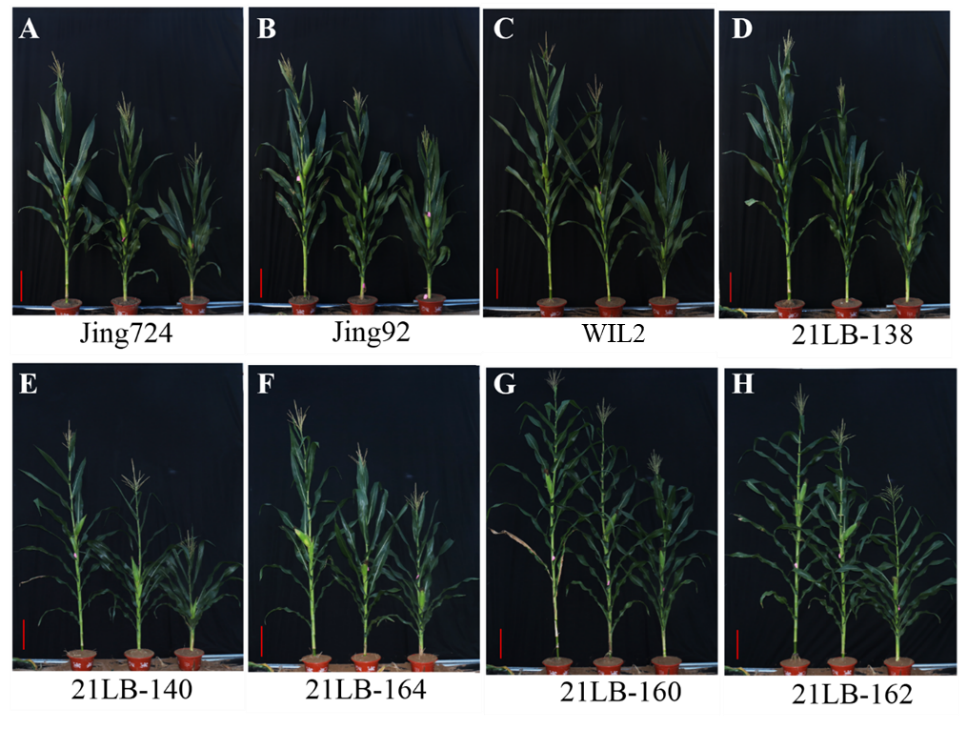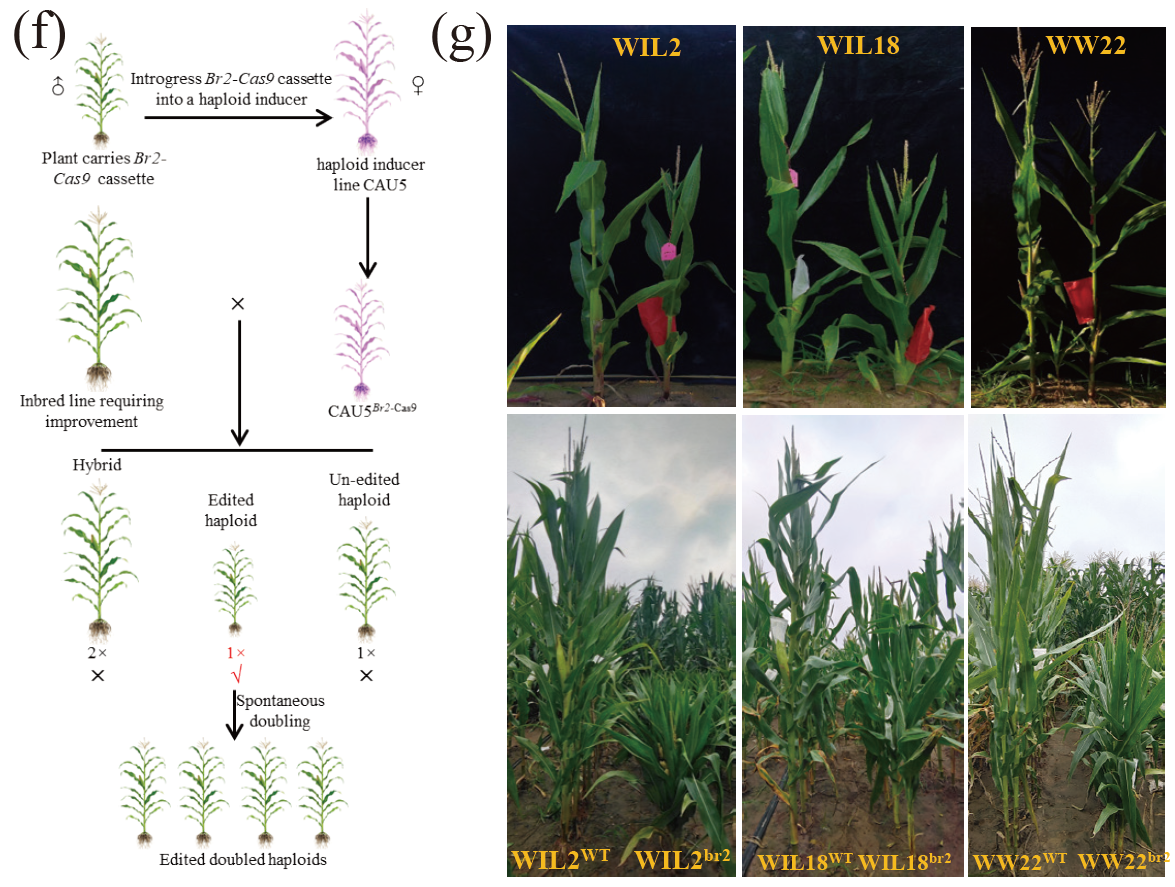Recently, the researchers in Biotechnology Research Institute of Chinese Academy of Agriculture Sciences reported a strategy to continuous reduction of maize plant height through selective genome editing of the Br2 gene. The relevant results were published in Plant Biotechnology Journal, which will provide important technical support for improving maize density tolerance and lodging resistance.
The "semi-dwarf" breeding in crops had triggered the global Green Revolution. However, to date, there is still a lack of practically applicable dwarfing strategies in maize. In this study, through selective genome editing of the Br2 gene, 7 alleles with different (continuous) dwarfing effects were created, among which two genotypes can reduce plant height without yield penalty. A large number of hybridization experiments showed that this strategy can create continuous dwarfing plant for almost any maize genetic background. By developing the Br2-based "Haploid Inducer Mediated Genome Editing (IMGE)" system, researchers could rapid improvement of maize plant height within two generations, that significantly enhancing breeding efficiency.

Figure 1. Continuous reduction of maize plant height through selective genome editing of the Br2 gene.

Figure 2. The universality of Br2 based genome-editing strategy in continuous dwarfing maize plant height.

Figure3. The Br2-based IMGE system could rapid improvement of maize plant height within two generations.
Dr. Zhao Binbin and Xia Zhanchao are the first authors of this paper. Researcher Wang Baobao from the Biotechnology Research Institute and Professor Wang Haiyang from South China Agricultural University are the corresponding authors.
This study was supported by projects including the National Key Research and Development Program of China and the National Natural Science Foundation of China.
Paper link: http://doi.org/10.1111/pbi.14571 |